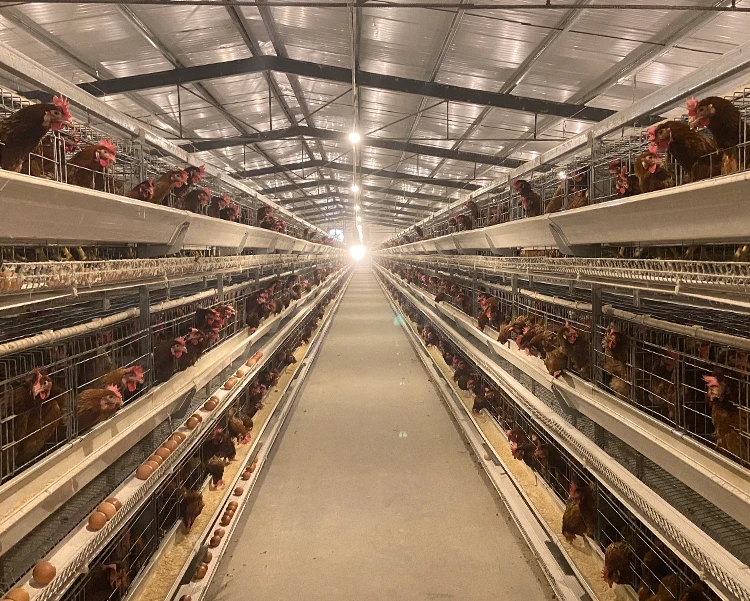chicken layer battery cage
Nov . 23, 2024 00:33 Back to list
chicken layer battery cage
The Chicken Layer Battery Cage An Overview
In the realm of poultry farming, the method of housing chickens has become a topic of significant debate, particularly regarding the use of battery cages for layer hens. Battery cages are small enclosures typically designed to house multiple hens in a confined space. While this system has been widely adopted in commercial egg production due to its efficiency, it raises crucial ethical, animal welfare, and environmental considerations.
What Are Battery Cages?
Battery cages are usually arranged in stacked rows, each cage holding anywhere from three to ten hens. These cages are often made from wire and provide minimal space for the birds, with each hen typically allotted less than a standard sheet of paper’s worth of room. This confinement is aimed at maximizing egg production and minimizing operational costs. The birds are often kept in dim lighting conditions to reduce stress and to enhance egg-laying efficiency.
Advantages of Battery Cages
From a production standpoint, battery cages have several advantages. Firstly, they facilitate easy management and monitoring of the hens. Farmers can efficiently collect eggs, manage feeding, and observe the health of their flock without needing to navigate through larger, more complex living systems. Additionally, the energy and resources required for maintaining a large intake area are reduced, which can lead to lower operational costs.
Moreover, battery cage systems can help in preventing disease transmission among hens, as the controlled environment limits contact with feces and other pathogens. This protective environment can result in a more stable supply of eggs and reduces the need for antibiotic treatments compared to free-range systems, which may face higher disease prevalence.
The Ethical Debate
chicken layer battery cage

Despite the operational benefits associated with battery cages, they have garnered criticism from animal welfare advocates and the public. Critics argue that these cages severely restrict natural behaviors, such as nesting, foraging, and social interaction. Hens in battery cages often exhibit signs of stress and frustration due to their limited mobility and lack of enrichment.
The ethical considerations surrounding battery cages have led to a growing movement advocating for alternative farming practices. This has sparked interest in enriched cages, free-range systems, and pasture-raised methods that prioritize the welfare of the animals. Many consumers are now demanding more humane options, reflecting a shift in public perception towards more sustainable and ethically responsible farming practices.
Regulatory Changes and Alternatives
In response to widespread criticism, several countries have started legislating against the use of traditional battery cages. For instance, the European Union has enacted legislation that phases out conventional battery cages in favor of more humane alternatives. Such changes are encouraging producers to explore systems that provide hens with more space and opportunities to engage in natural behaviors.
Alternatives to battery cage systems include barn-laid and free-range systems, which offer hens more space and access to outdoor environments. While these systems may require more land and resources, they have gained traction among consumers who prioritize animal welfare and sustainability.
Conclusion
The debate surrounding chicken layer battery cages encapsulates the broader discussion of animal welfare, ethical farming practices, and consumer preferences. As society becomes more conscious of these issues, the poultry industry is likely to continue evolving towards practices that balance productivity with compassion for the animals involved. In this context, understanding the implications of battery cage systems is more important than ever for farmers, consumers, and policymakers alike.
-
Hot Sale 24 & 18 Door Rabbit Cages - Premium Breeding Solutions
NewsJul.25,2025
-
Automatic Feeding Line System Pan Feeder Nipple Drinker - Anping County Yize Metal Products Co., Ltd.
NewsJul.21,2025
-
Automatic Feeding Line System Pan Feeder Nipple Drinker - Anping County Yize Metal Products Co., Ltd.
NewsJul.21,2025
-
Automatic Feeding Line System - Anping Yize | Precision & Nipple
NewsJul.21,2025
-
Automatic Feeding Line System - Anping Yize | Precision & Nipple
NewsJul.21,2025
-
Automatic Feeding Line System-Anping County Yize Metal Products Co., Ltd.|Efficient Feed Distribution&Customized Animal Farming Solutions
NewsJul.21,2025






